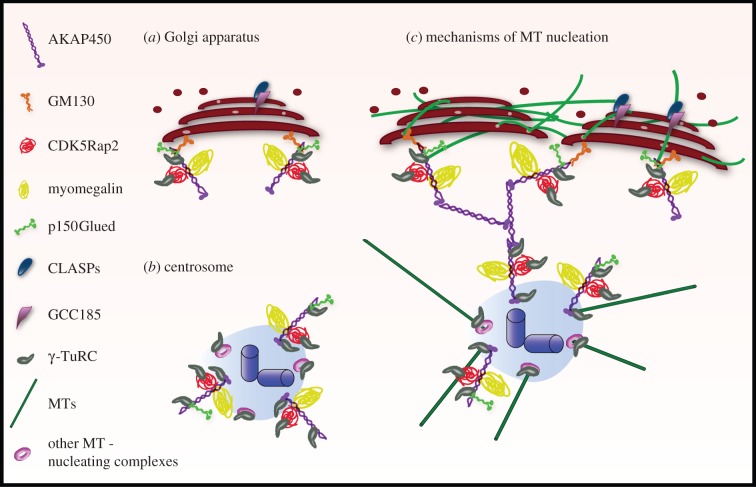Figure 2.
The centrosome–GA nexus. (a,b) Similar multiprotein complexes are present at both the cis-face of the GA (a) and the PCM (b). These complexes contain AKAP450, CDK5Rap2, myomegalin and MT-anchoring proteins such as p150Glued. They are specifically recruited to the cis-GA through the interaction between GM130 and the N-terminal domain of AKAP450. Targeting to the centrosome is mediated by the AKAP450 C-terminal PACT domain. AKAP450 and CDK5Rap2 recruit γ-TuRCs and promote MT nucleation at both subcellular locations. Myomegalin and p150Glued might provide MT stabilization activities. (c) A working model for the mechanism of MT nucleation at the GA based on availaible data. During Golgi assembly, an MT nucleated by one multiprotein complex might be stabilized by another one located in the vicinity of the same or of a neighbouring stack, before being captured by TGN-associated CLASPs. This would facilitate the correct alignment of Golgi stacks preceding their fusion into a ribbon. MTs could stop growing at the TGN, thus generating an intra-GA network. Alternatively, they may continue to elongate towards the cell periphery. I propose that proteins such as AKAP450 or CDK5Rap2 represent not only functional but also physical connectors between the centrosome and the GA in mammalian cells.

